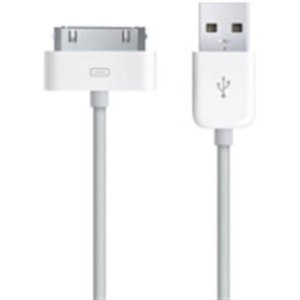As if it's not bad enough with all this Hdmi "stuff" that possible purchasers also have to worry about long Hdmi cable runs. In the days of analog video the reliability of signal transmission over long cable lengths was never a qoute but in the early days of Hdmi and Dvi we heard rumors of consumers encountering problems over relatively short runs but things have improved over time but the actual distance you can run long Hdmi cables over is still an commerce hot potato.
Let's look at the newest Hdmi specification for an reply to the question. Every cable has to be tested by the Hdmi authorized test centers before they are able to gain yielding certification. These certificates can be used as some kind of unofficial guide for workable cable lengths. There are a whole of cables that are compliant at lengths over 10 meters and there are some that have passed the testing up to 13.0 meters, so these are proven not to degrade the signal beyond a point stipulated by the accreditors. A good piece of advice is to buy certified cable with the newest specification, at this time Hdmi is at 1.3b, but 1.3 and 1.3a are also acceptable, as the test protocols these cables have to pass to receive the accepted are more stringent than for prior specification, say 1.1 or 1.2.
Before you are tempted to buy anyone over 13.0 meters (45-foot), they are ready and being marketed as compliant, then it may be wise to ask to see a copy of the certification because at this present time the distance of 13.0 meters (45-foot) is the longest none boosted (amplified) cable that I have seen with the literal, certification.
That said, there are ready Hdmi cables that are classed as active which use powered amplifiers to boost the signal enabling longer runs of cable to be used. An Eq unit is also used on these active cables which looks at lost high frequency data and then compensates for this. These systems do work, but with no dependable information regarding actual effective length, the added costs complicated and the extra possibility of signal delivery failure from the inclusion of extra components it may be a step to far for your home entertainment ideas and best left to market applications.
But all is not lost if you need to run longer lengths of cables. Just bear in mind the Hdmi spec is their so you can be positive that when you build your ideas the compliant signal (source) can be linked to a compliant unit which in turn can then be linked to another using compliant cables and when you switch everything on it will work. As with all specification, in there will be built some leeway - over engineered - and so the source signal delivered to the Hd enabled tool is best than is needed for that tool to function as stated. This gives you a integrate of options, options that do not fit into the specification so are not guaranteed to work as in the example above, but options which have been proven to work and do not have the added costs of amplification.
There are connectors ready which, although not compliant, will do a job and of policy there are the over distance (for compliance) cables. If you are to go this way it is worth bearing in mind that the higher the bit rate your Hd enabled tool is pulling the less chance of success you have. You also need to remember that this also applies to long chains, Hdtv to Blu-ray or home theater linked to the internet streaming video on interrogate at 1080p will be pushing longer cable lengths, those over a compliant length, to it's limits. But for 480p, 720p or 1080i they may work fine. Do you see just how hit and miss this can be.
Now take into account time to come advances, which you should if you are putting these cables in walls etc., as if you are running on the limits of the cables this could stop you upgrading. Take where we are at present. 1080p is the newest resolution for Hdtv. Not that long ago 480p was the norm, then came 720p and 1080i which uses a bit rate approximately three times that of accepted 480p. Then along came 1080p that doubles the bit rate consumption of 1080i and 720p. Now we stand on the edge of 3D Tv, 16 bit color and 1460p (and above), 16 bit color alone will duplicate the required bit rate for current accepted resolutions, so you see where this could go. One more foremost point to consider when deciding whether to go long or not. It is a fact that on short cables, those of 2-3 meter (6-10-foot) length, the quality matters less. A cable costing a few dollars will accomplish just as good as one costing tens of dollars, but when entering the realms of none yielding quality matters far more. Ordinarily speaking, the lower quality the cable is then the lower the effective working distance will be when depth of color or photograph resolution increases.
So lets unravel what's been said regarding long Hdmi cables and their reliability. For the lengths that are Hdmi compliant, those lengths up to about 13 meters (45-foot), their use is pretty much guaranteed, even if you are using the economy options, for 480p, 720p, 1080i and - even if not as consistently dependable - 1080p so go ahead and use them with confidence. The same goes for those shorter cables of 1-3 meters (3-10-foot) lengths, though care should taken when using them in long signal chains as they could become unreliable. economy options of the longest Hdmi compliant cables working on the limits of it's doing capabilities may struggle in the 1460p, 16 bit color time to come and their use needs to be questioned if their facility is behind ceilings or walls as the supplementary cost of a more expensive cable may be less than a faultless re-install in the (not to distant) future. The use of over compliant distance Hdmi cables needs to be linked to all the factors mentioned above but with the rider that the best formula of testing if it will be prosperous still lies with plugging it in. Even at these lengths, the economy options are still worth inspecting if the facility of long Hdmi cables is for real accessed and they work Ok with your present equipment.
 | Price : $199.00
| Price : $199.00












